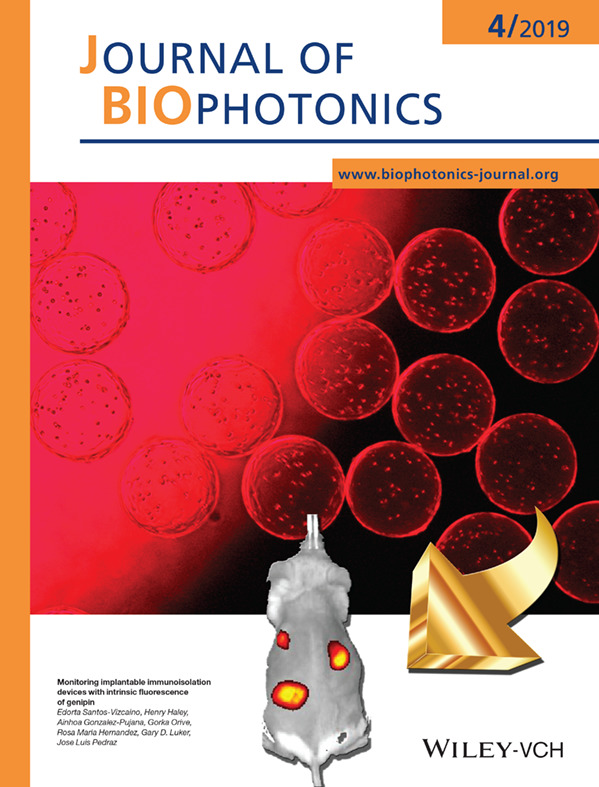Biomedical devices with natural fluorescence for monitoring in the body
Researchers from the NanoBioCel and the ICTS NANBIOSIS through the Drug Formulation Unit 10 of CIBER-BBN and the University of the Basque Country (UPV/EHU), together with the University of Michigan (USA), have developed a biomedical cellular immunoisolation device (microcapsules) with intrinsic capacity to be traced once implanted in the organism. The novel design incorporates a natural substance called genipine, which emits intense and stable fluorescence in the far red range. Drug Formulation Unit 10 of Nanbiosis has worked in the design and development of fluorescent particles for use in experimental animals.
Non-invasive monitoring of implanted hydrogel-based biosystems generally requires indirect vehicle or load marking, which increases complexity and the potential risk of altering their functionality. For the first time, this group of researchers has demonstrated that hydrogel-based biosystems can be produced from biomaterials with intrinsic properties for non-invasive monitoring, in this case through the use of genipine.
The work has recently been published in the Journal of Biophotonics and has been selected by the journal as a cover story in April.
It is important to note that to date no one has exploited the natural fluorescence emitted by genipine as a non-invasive monitoring system in cell therapies implanted in living beings,” the researchers point out. As a first milestone in this sense, we have developed a novel immunoisolation device that incorporates genipine into its own design, making it traceable once implanted in the body. Using a fast, efficient and non-cytotoxic procedure, we have managed to maximize the fluorescence of the microcapsules until an excellent signal-to-noise ratio is achieved. In addition, the group have validated the use of genipine as a quantitative imaging probe, demonstrating that intense and stable fluorescence is obtained with good signal linearity against doses of microcapsules implanted for several weeks. Through this strategy, they have been able to evaluate the actual injected dose immediately and control its position over time, which significantly improves the biosafety and efficacy of the therapy.
In addition, the idea may have a potentially successful application in the nano, micro and macro hydrogel-based technologies industry. These are called to be fundamental pieces both for biomedical research and for the advancement of clinical medicine through applications such as tissue engineering, regenerative medicine. “As fluorescence imaging systems are gradually implemented in clinical practice, we believe that our proposal could have a successful applicability in advancing multiple hydrogel-based biotechnologies, including drug and cell delivery systems, vaccines or biosensors,” they conclude.
Article of reference :
Edorta Santos‐Vizcaino, Henry Haley, Ainhoa Gonzalez‐Pujana, Gorka Orive, Rosa Maria Hernandez, Gary D. Luker, Jose Luis Pedraz. Monitoring implantable immunoisolation devices with intrinsic fluorescence of genipin. Journal of Biophotonics (April 2019) DOI: https://doi.org/10.1002/jbio.201800170









